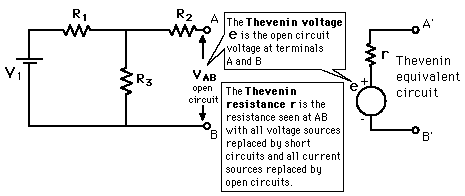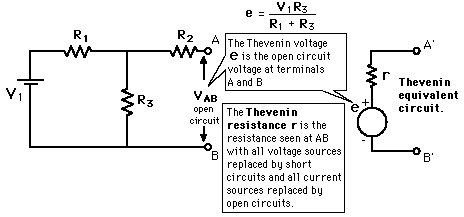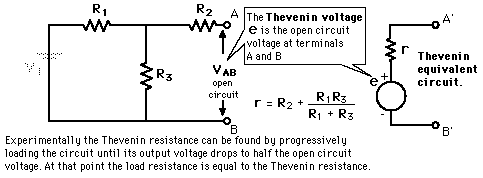Thevenin's Theorem
Any combination of batteries and resistances with two terminals can be replaced by a single voltage source e and a single series resistor r. The value of e is the open circuit voltage at the terminals, and the value of r is e divided by the current with the terminals short circuited.

| Thevenin voltage | Thevenin resistance | Numerical example | Norton equivalent |
| to AC Version | Application in Digital to Analog Converter |
DC Circuits
| HyperPhysics***** Electricity and Magnetism | R Nave |
 does not affect this voltage and the resistances
does not affect this voltage and the resistances
 and
and  form a
form a 


 replaced by a short circuit.
replaced by a short circuit.
